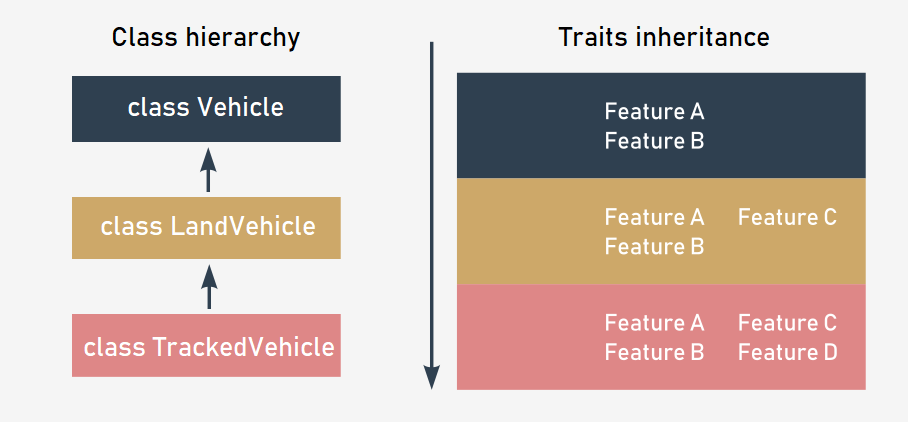Inheritance and polymorphism — Inheritance is a pillar of OOP
Inheritance is one of the fundamental concepts of object oriented programming, and expresses the fundamental relationships between classes: superclasses (parents) and their subclasses (descendants). Inheritance creates a class hierarchy. Any object bound to a specific level of class hierarchy inherits all the traits (methods and attributes) defined inside any of the superclasses.
This means that inheritance is a way of building a new class, not from scratch, but by using an already defined repertoire of traits. The new class inherits (and this is the key) all the already existing equipment, but is able to add some new features if needed.
Each subclass is more specialized (or more specific) than its superclass. Conversely, each superclass is more general (more abstract) than any of its subclasses. Note that we've presumed that a class may only have one superclass — this is not always true, but we'll discuss this issue more a bit later.

A very simple example of two-level inheritance is presented here:
class Vehicle:
pass
class LandVehicle(Vehicle):
pass
class TrackedVehicle(LandVehicle):
pass
All the presented classes are empty for now, as we're going to show you how the mutual relations between the super- and subclasses work.
We can say that:
- the
Vehicleclass is the superclass for both theLandVehicleandTrackedVehicleclasses; - the
LandVehicleclass is a subclass ofVehicleand a superclass ofTrackedVehicleat the same time; - the
TrackedVehicleclass is a subclass of both theVehicleandLandVehicleclasses.